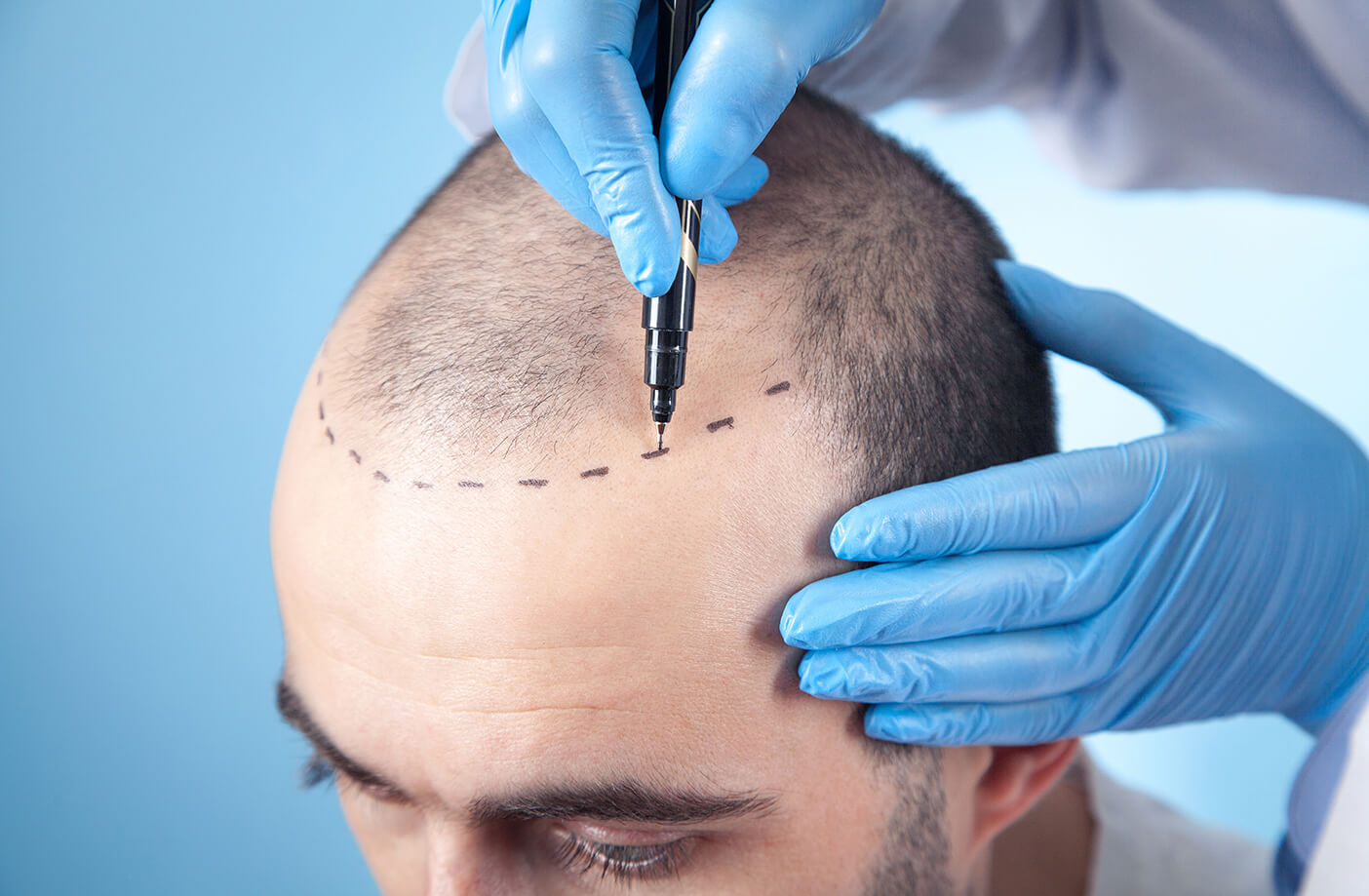A hair transplant is a surgical procedure used to treat hair loss or baldness by relocating hair follicles from one area of the body (typically the back or sides of the scalp, known as the donor area) to another area with thinning or balding hair (the recipient area, usually the top or front of the scalp). This procedure is designed to restore natural hair growth in areas affected by hair loss.
Here’s how a hair transplant typically works:
1. Consultation: The process begins with a consultation with a qualified hair transplant specialist. During this consultation, the surgeon assesses the patient’s hair loss pattern, donor hair quality, and discusses the patient’s goals and expectations.
2. Anesthesia: On the day of the procedure, the patient is administered local anesthesia to numb both the donor and recipient areas. This ensures that the patient remains comfortable and pain-free throughout the surgery.
3. Donor Hair Harvesting:
– Follicular Unit Transplant (FUT): In this method, a strip of scalp containing healthy hair follicles is surgically removed from the donor area. The wound is then closed with sutures or staples, leaving a linear scar that can typically be hidden by surrounding hair.
– Follicular Unit Extraction (FUE): In FUE, individual hair follicles are extracted one by one from the donor area using a specialized instrument. This method does not leave a linear scar but instead leaves tiny, dot-like scars that are less noticeable.
4. Preparation of Hair Follicles: The harvested hair follicles are carefully dissected and prepared for transplantation. They are sorted into groups or follicular units to ensure natural-looking results.
5. Recipient Site Creation: Tiny incisions or recipient sites are made in the recipient area where the hair will be transplanted. These sites are strategically placed to mimic the natural hair growth pattern and direction.
6. Transplantation: The prepared hair follicles are then implanted into the recipient sites. This is a meticulous process that requires precision to ensure that the transplanted hair will grow naturally and blend seamlessly with the existing hair.
7. Dressing and Recovery: After the transplantation is complete, the scalp may be dressed, and the patient is given post-operative care instructions. The recovery period can vary, but most patients can resume regular activities within a few days to a week.
8. Hair Growth: Over the following months, the transplanted hair follicles gradually start to grow new hair. The final results may take several months to a year to become fully visible, as the transplanted hair goes through its natural growth cycle.
A successful hair transplant can result in a more natural and fuller-looking head of hair, improving the patient’s self-esteem and overall appearance. The success of the procedure depends on factors such as the surgeon’s skill, the quality of donor hair, and adherence to post-operative care instructions. Patients considering a hair transplant should consult with a qualified and experienced hair transplant specialist to discuss their individual needs and expectations.
It’s advisable to consult with a qualified and experienced surgeon Dr. Deepam Shah Practicing at Viva Aesthetic Clinic as he considered Best Hair Transplant in Mumbai.



